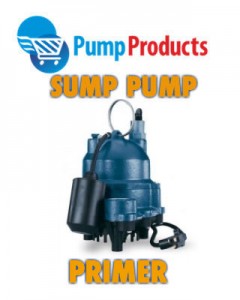
Sump pumps generally sit in the lowest part of a basement sump pit and pump rainwater, snowmelt or appliance runoff away from a house and keep the basement dry. A small amount of water can cause thousands of dollars of damage and an effective sump pump system is one of the most important ways to protect a home.
The size of a sump pit will determine the sump pump that’s best suited for it so if you’re installing a sump pit for the first time, install a large one. A small pit will accommodate a small pump that will have to run more often and will generally have a motor that runs hotter and have a shorter life.
That said, large pits can accommodate submersible pumps with self-cooling, moisture sealed motors that run quietly.
Submersible pumps are activated by float switches in vertical, tethered and pressure configurations. Being “float” contingent, they can malfunction when caught on debris or pinned against a sump pit wall. Be sure to select the switch style least likely to get snagged in your pit. Read our Pump Switch Buyer’s Guide for some pointers.
Pedestal pumps are suitable for smaller pits with external motors that run outside of a sump pit while the pump drains water below. They are often louder and less hearty than submersible pumps but will nonetheless keep your basement dry if properly sized and maintained.
Check out the Pump Products Sump Pump Buyer’s Guide for tips on how to determine the horsepower of the pump you’ll need.
Power outage and float switch failure can cause sump pumps to fail and result in basement flooding. Any homeowner who maintains a basement sump pump should therefore consider acquiring a back-up battery or emergency backup system.
Some battery back-up pumps run on deep-cycle maintenance-free marine batteries while others run on traditional acid batteries. These require the occasional addition of water.
Liberty, Zoeller and Pro Series offer preassembled combination systems that couple a primary sump pump and battery backup sump pump in a single system. The primary pump operates off AC power. If the power is interrupted, or more water is coming into the sump than the AC pump can handle, the backup sump pump will kick-in automatically. In these systems the primary pump maintains and recharges the back-up battery automatically.
Homes with a consistent (40-100psi) municipal water supply have the failsafe option of water powered back-up sump pumps.
A battery backup system, even if it is well-maintained, can fail, and the battery backup has a limited amount of run time, whereas the municipal water pressure will be there to siphon the sump pit even when the power is off.
Because they don’t run on batteries, they are maintenance-free. However, water powered back-up pumps are not appropriate for use with an electrically powered well water system or as a substitute for a primary basement sump pump system.
A final tip if your home is prone to flooding: Check sump pumps periodically during a storm and keep an empty bucket or small utility pump nearby in case the primary pump becomes overwhelmed or requires emptying by hand.
For detailed specs, manuals and reviews on the Sump pumps, combination systems, combination systems and water powered systems we stock and ship nationally, visit our product pages at www.pumpproducts.com or call us for details: 1-800-429-0800.





